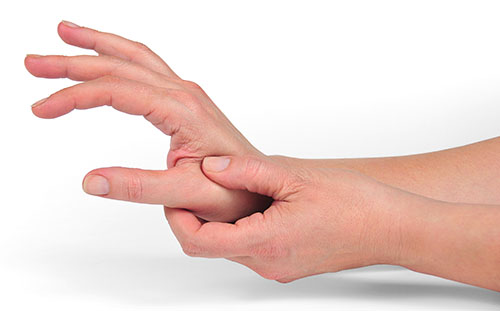| What is Arthrosis of the First CMC Joint?8 August 2017 | Eugene Of all the digits in the hand, the thumb is perhaps the most important. It is involved in nearly every movement we make with our hands, and is crucial to grasping, pushing, and manipulating objects. That's why, when a problem arises with the thumb, it's important to know exactly what the problem is, and how to treat it, as quickly as possible. What is Arthrosis of the First CMC Joint?Arthrosis of the first carpometacarpal (CMC) joint is a type of osteoarthritis that affects the joint that connects the thumb to the wrist. This condition is also commonly known as arthrosis of the trapeziometacarpal (TMC) joint, or, more simply, osteoarthritis of the base of the thumb. This crucial area is the second most common site of osteoarthritis in the hand, behind the distal joints of the fingers. It is especially common in postmenopausal women, who experience this type of osteoarthritis more than any other. What Causes Arthrosis of the First CMC Joint?When examining the potential causes of this condition, it is important to note the physiology of the joint and its inherent vulnerability. This arthrosis can affect a wide range of movements, partly due to the ways the joint had to change during our evolution. Over the millennia, our TM joint became biconcave, allowing us to move it in three planes, as well as in true opposition to our other fingers. This change made our stabilising muscles, such as the TMC joint in question, extremely important to most motions, and also made them subject to increased strain.
Diagram of a healthy thumb joint compared to one with arthrosis This strain is experienced by our TMC joint in most daily activities that involve grasping, pinching, or object manipulation due to the increased range of motion that it must handle. Once our ligaments become unable to stabilise our joints as well as they once could, joint degradation, or osteoarthritis, is bound to happen in the area. As this condition progresses, a loss of articular cartilage occurs, leading to a loss of articulate dexterity, as well as subsequent pain that will gradually become worse if left untreated. Symptoms and DiagnosisWhile this type of osteoarthritis is very common among a wide range of groups, it is commonly misdiagnosed due to its similarity to other types of arthritis. The most common symptom is an experience of radial-sided wrist pain, though this complaint is shared throughout a wide range of wrist conditions. Some common symptoms include:
While you should leave the diagnosis up to your doctor, it is worth knowing that other wrist conditions must be first ruled out before Arthrosis of the First CMC Joint is diagnosed. These include DeQuervain's disease, thumb triggering and metacarpophalangeal arthritis. It is also important to note that 43% of patients with this condition will also have carpal tunnel syndrome as well.
Hand with pain in the First CMC Joint Splinting and TreatmentAs with many types of arthritis and other wrist conditions, a useful early treatment is the application of non-steroidal anti-inflammatories, such as Ibuprofen. Initial treatment also relies on reduction of inflammation by resting the joint, which means the proper splint is key, as well as modification of stressful activities until the symptoms subside. These splints could take the form of a custom-moulded immobilising splint, or, for less severe cases, an off-the-shelf thumb immobilising splint will do. For more severe conditions, hand therapy or even surgery may be necessary. To take a look at the range of thumb splints we have available for Arthrosis of the First CMC Joint here at WristSupports.co.uk, click the yellow button below. Do you have a question to ask or something to add? Why not leave us a comment below or find us on Facebook or Twitter. |
FREE UK DELIVERYon orders of £40 and over. EXPERT CUSTOMER SUPPORTRead our reviews. EASY PRODUCT RETURNSwith our 30 day returns policy. |


